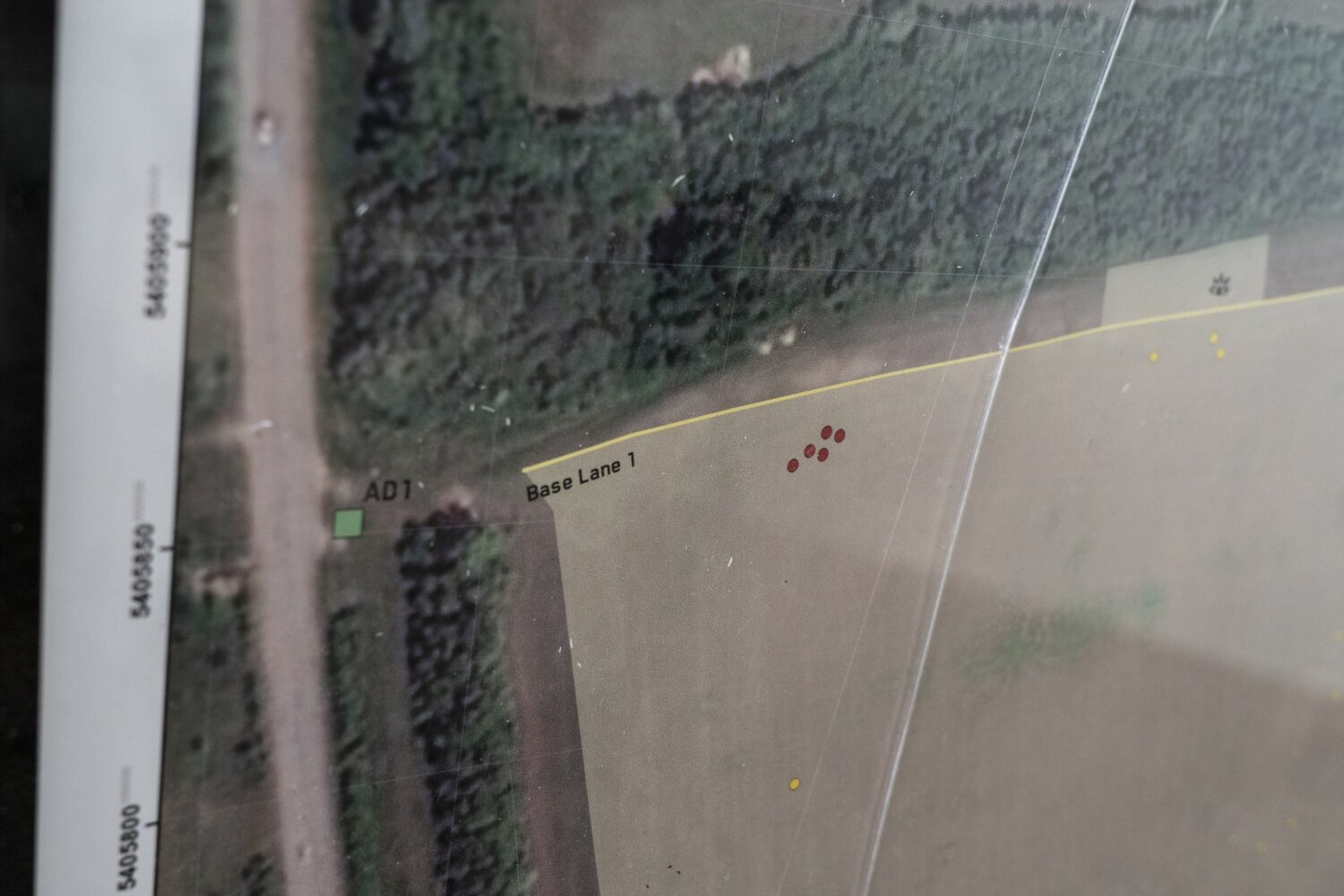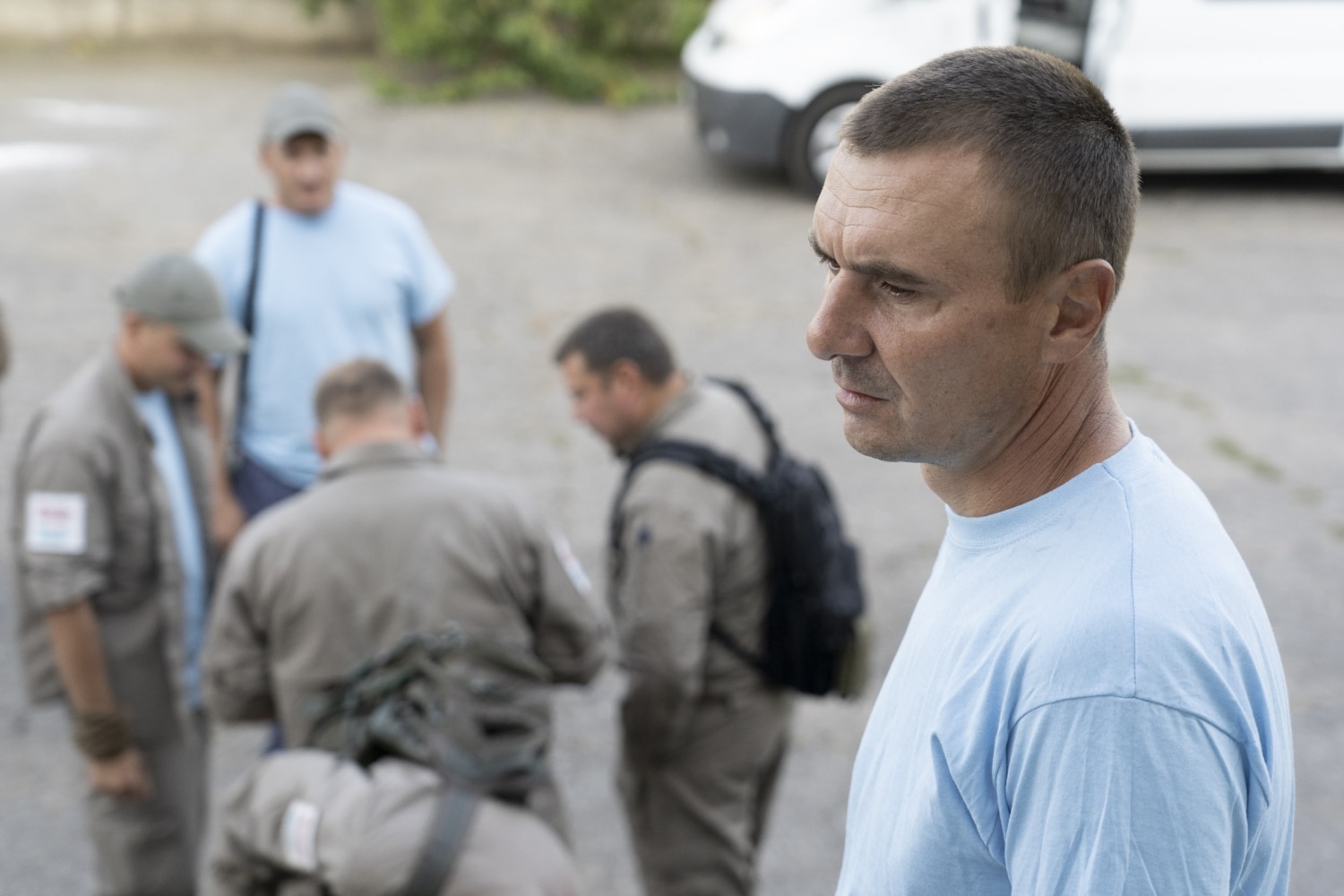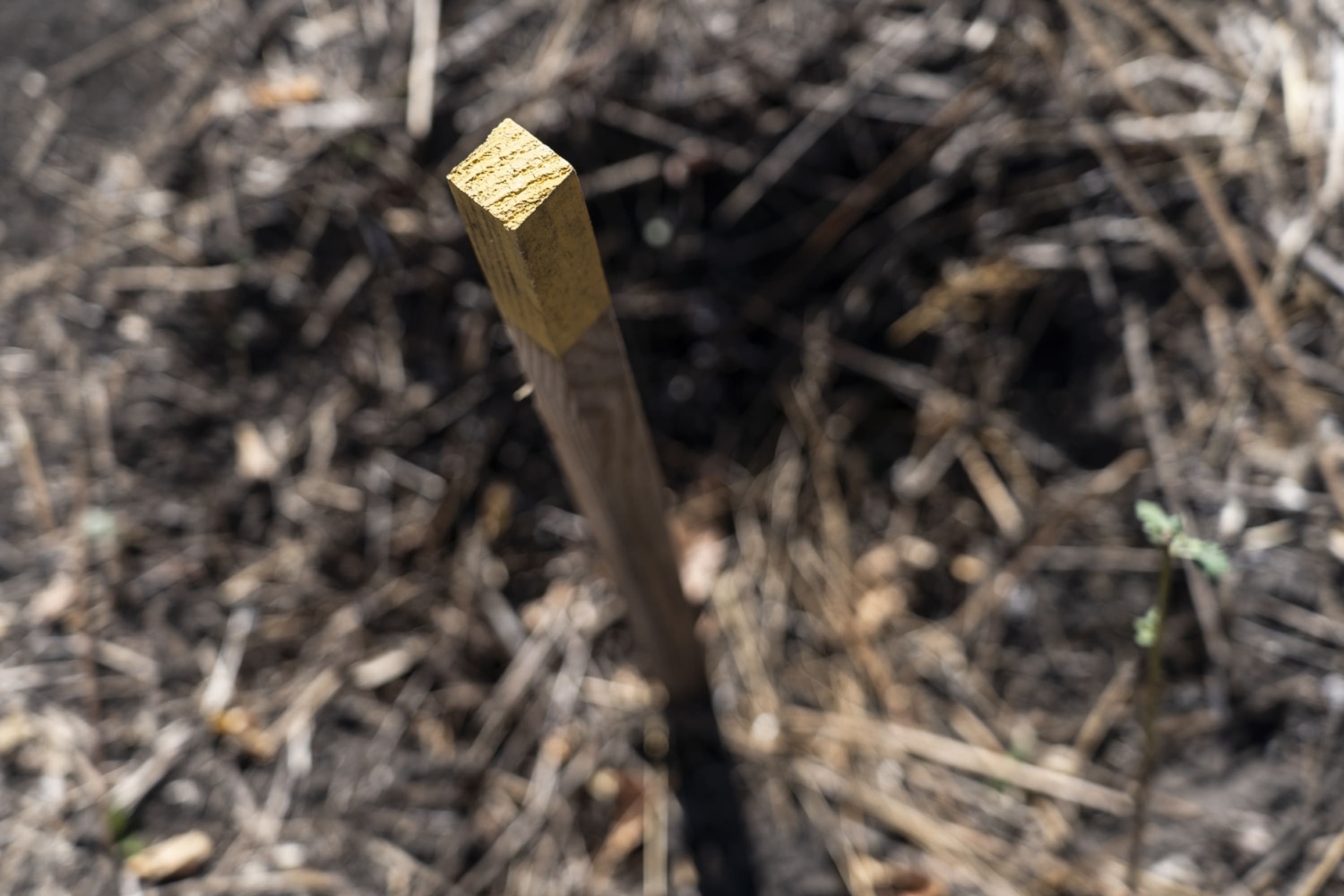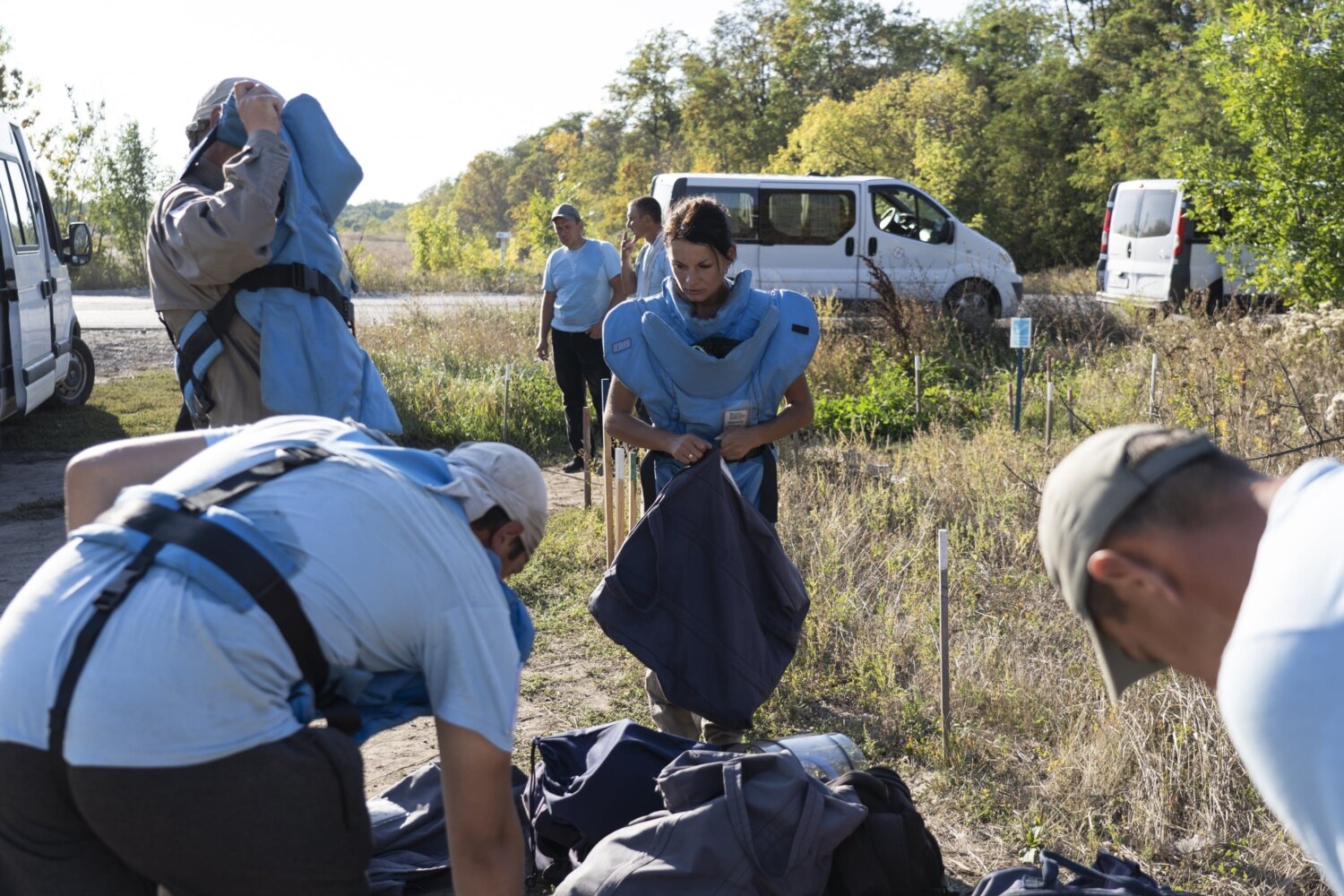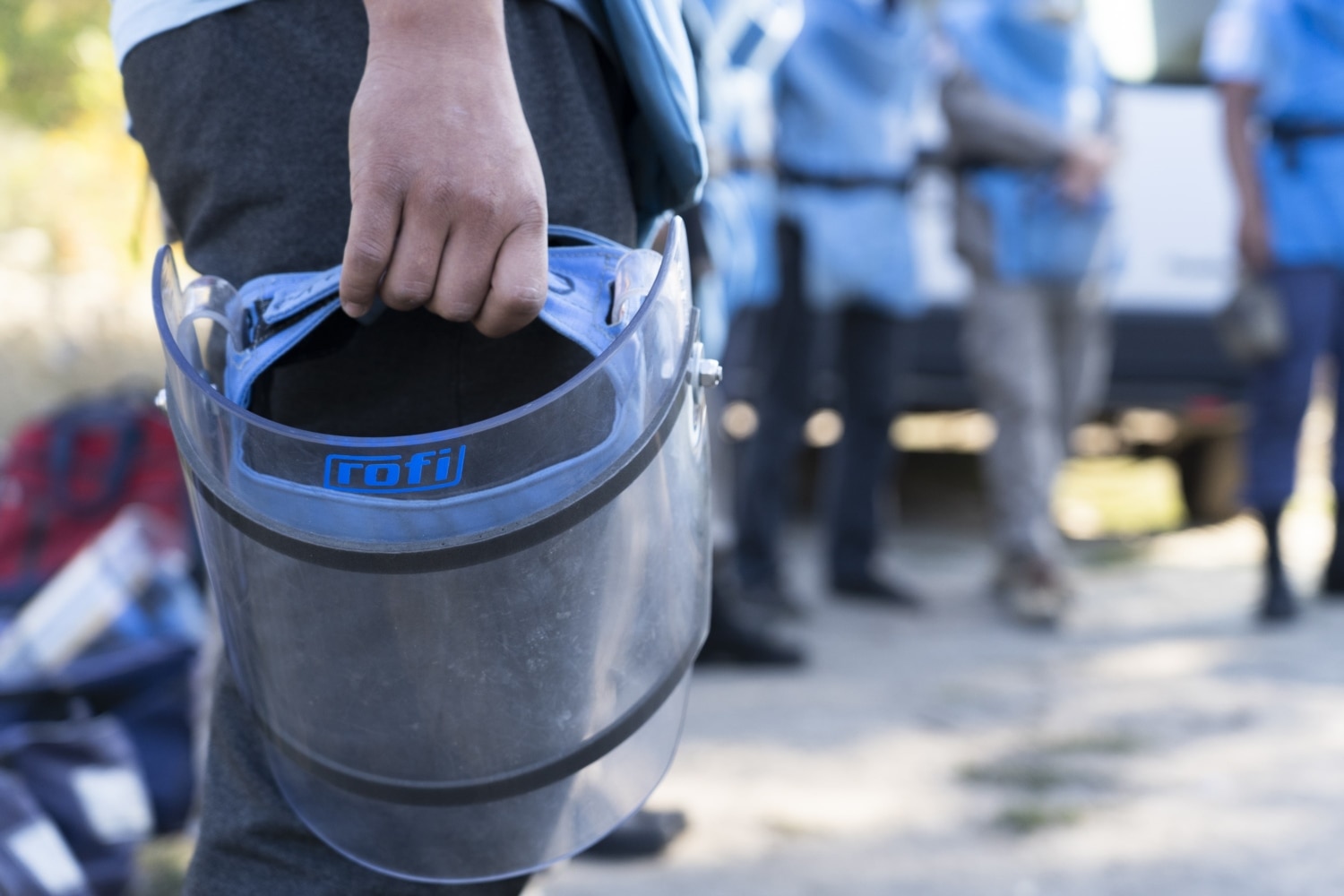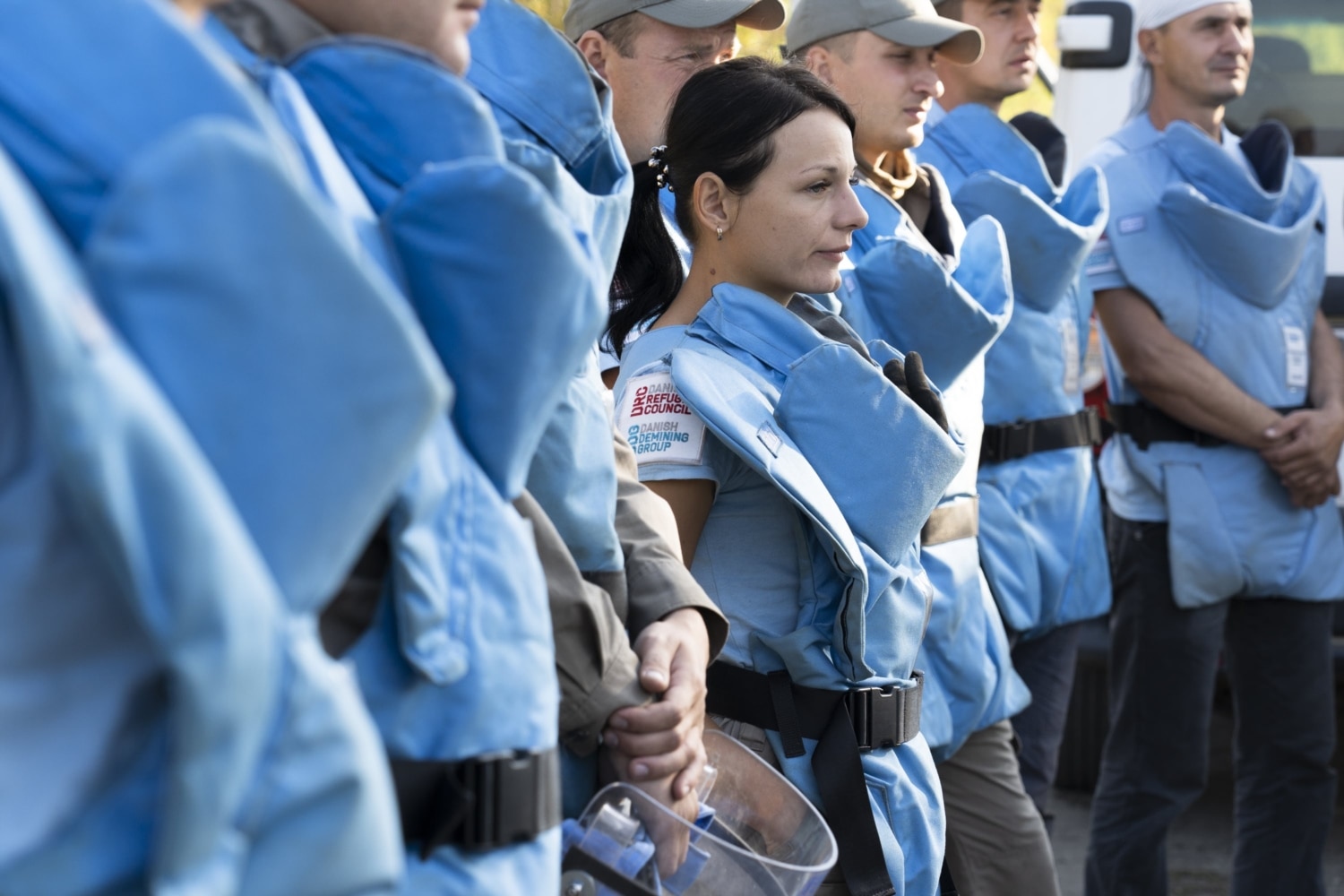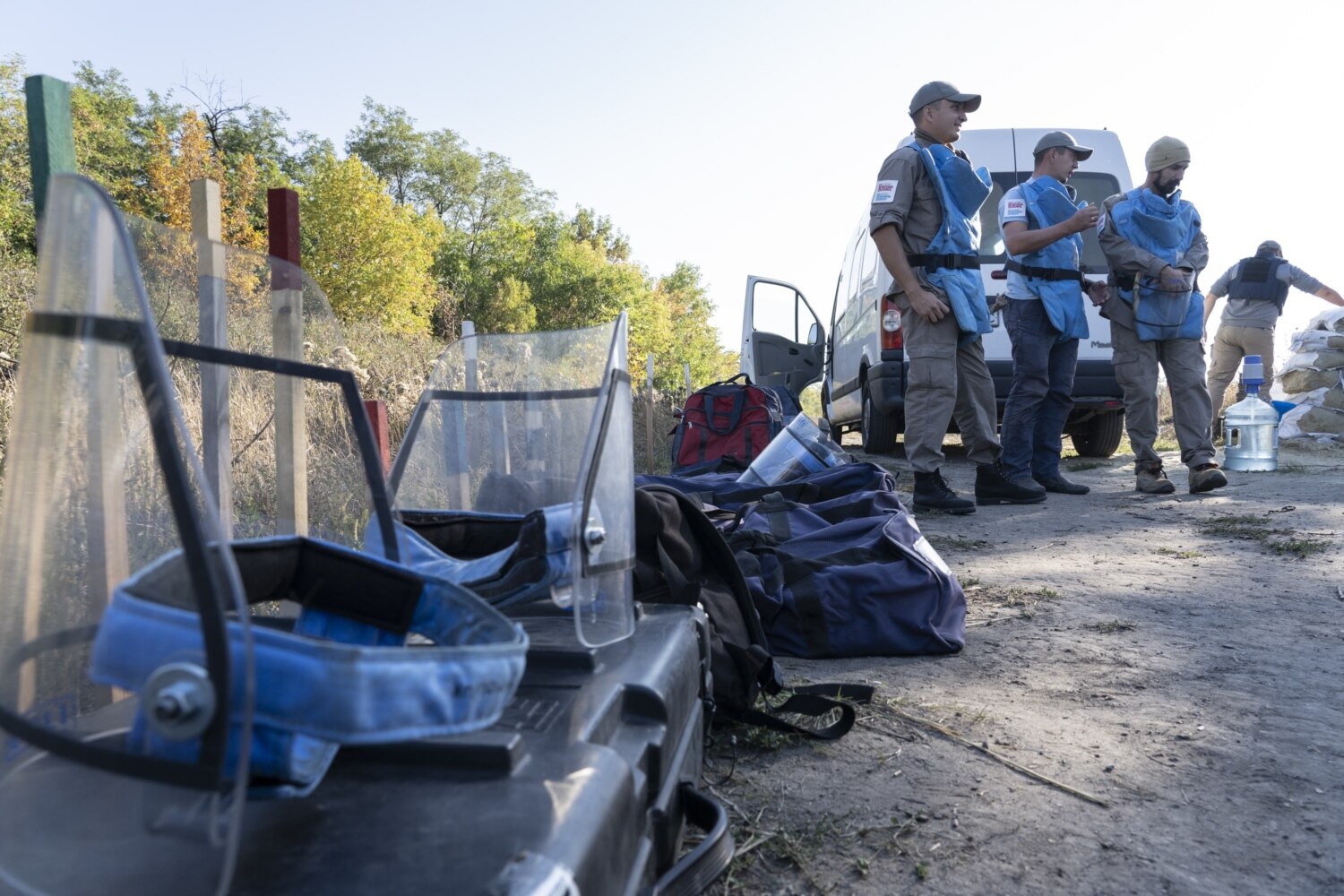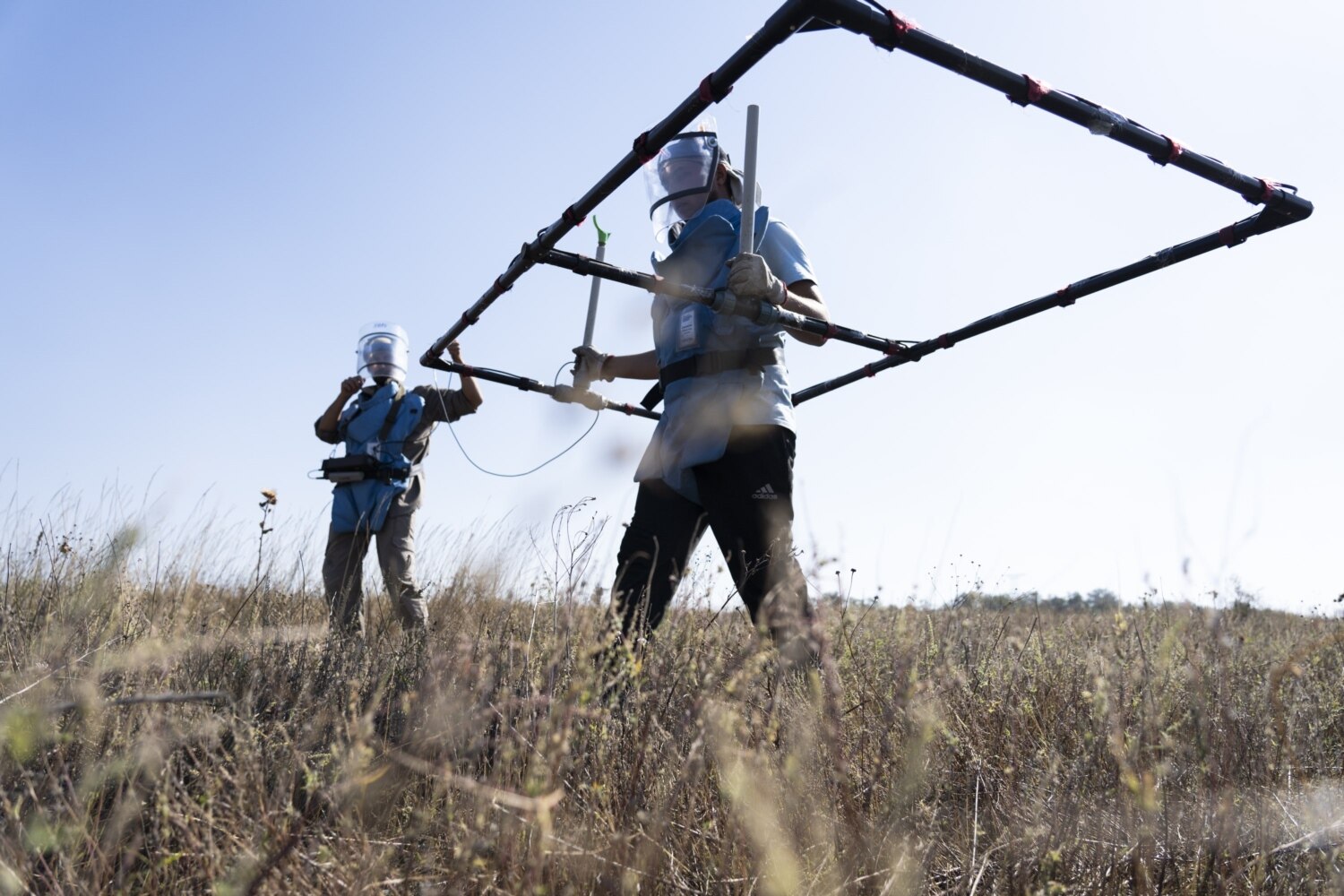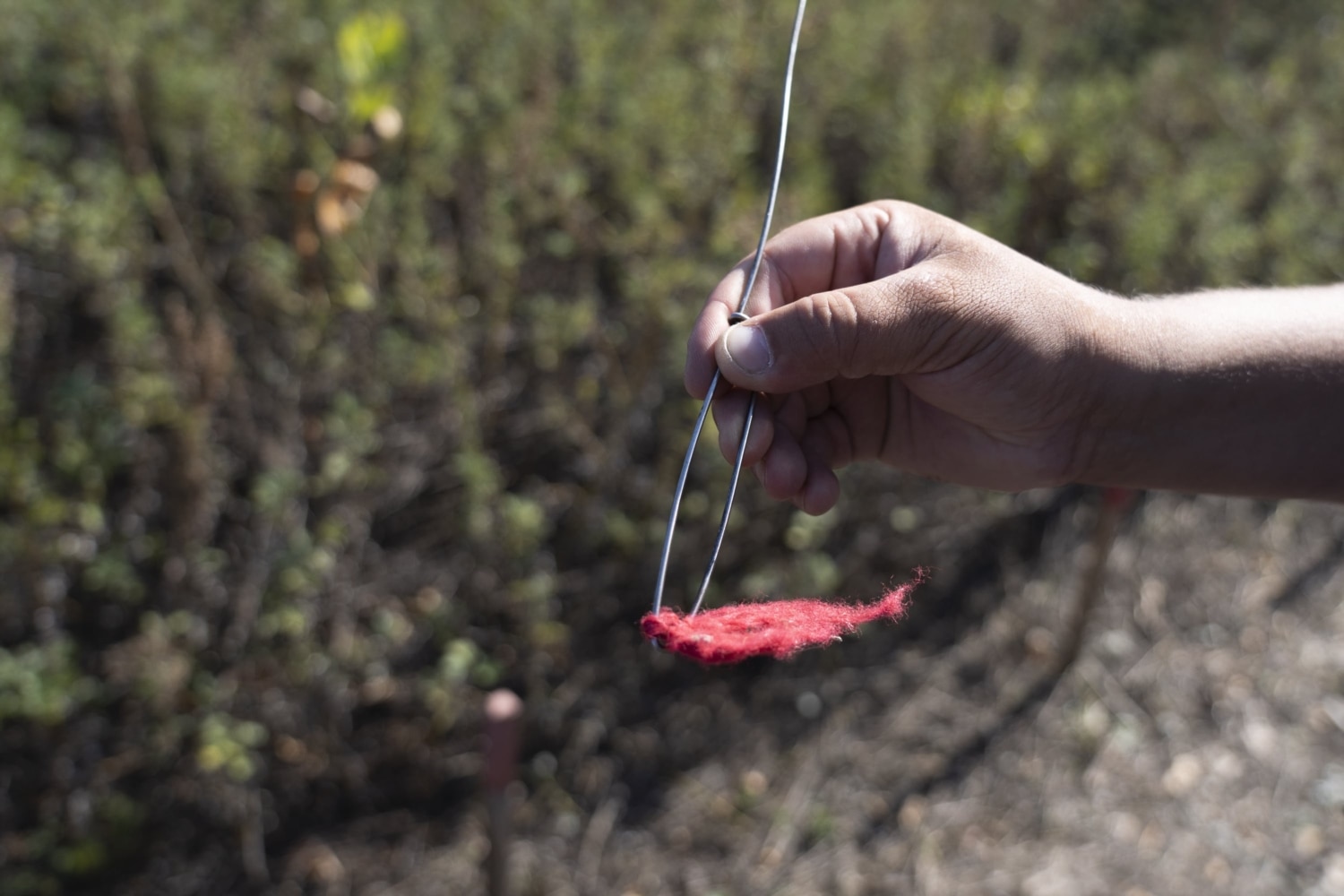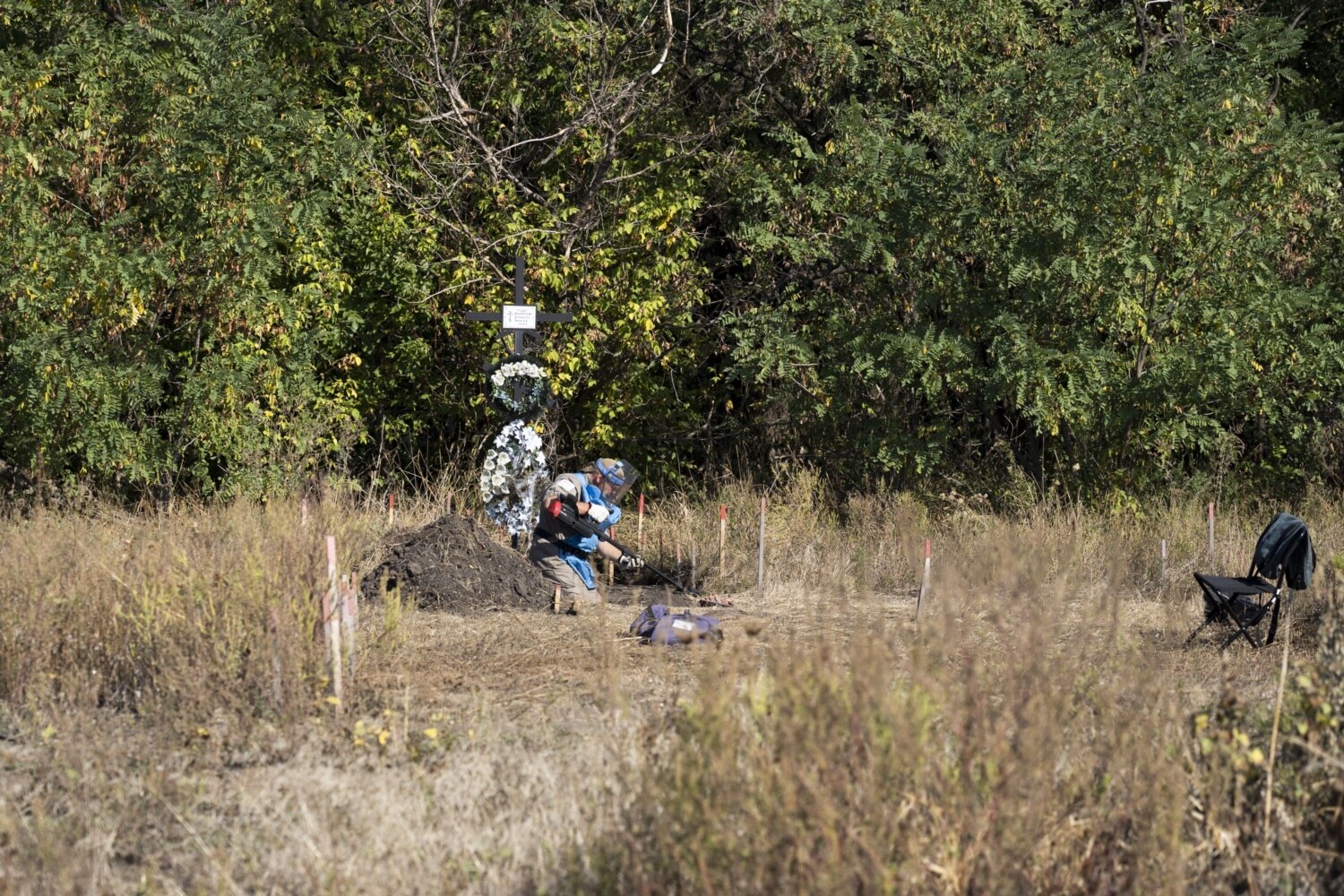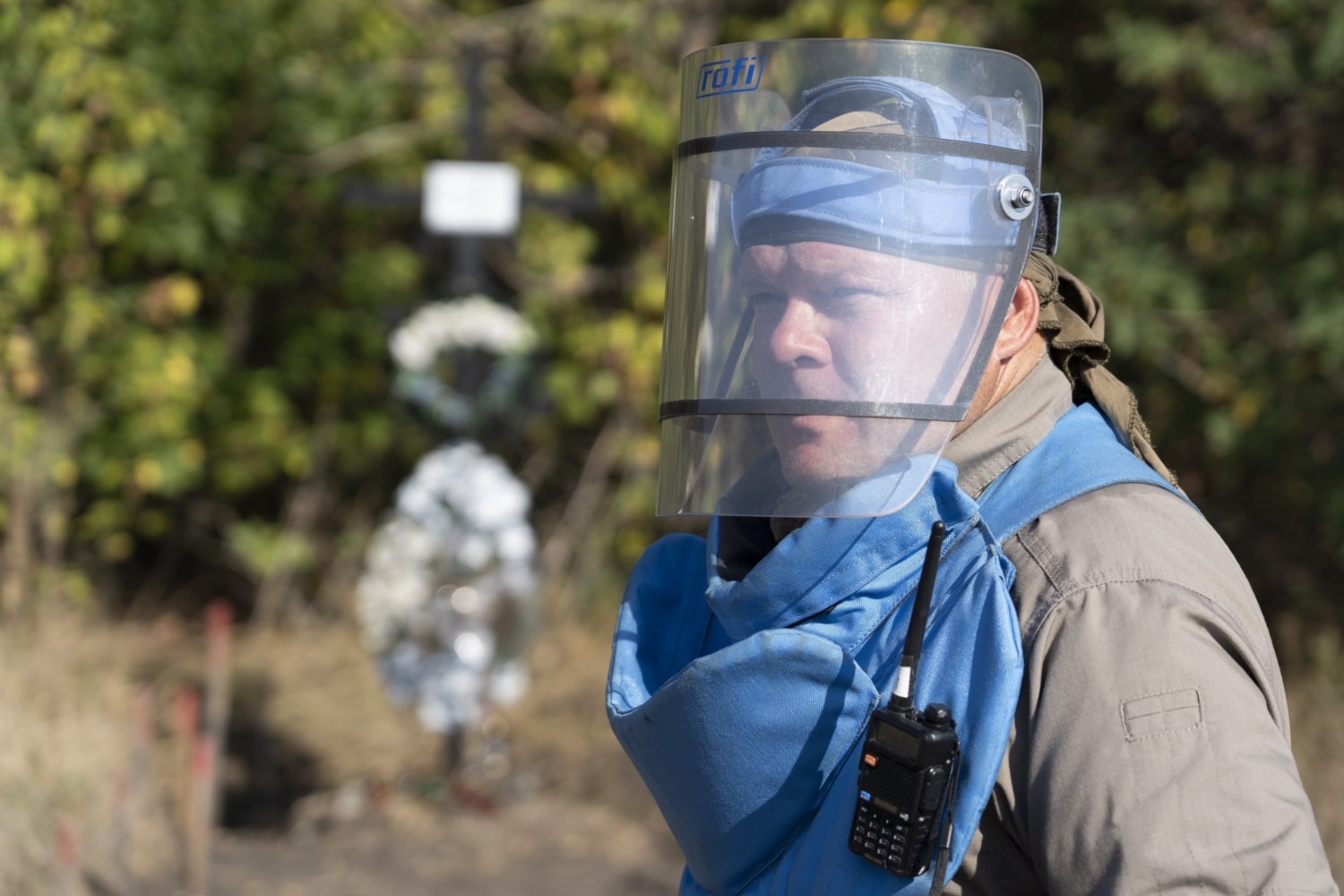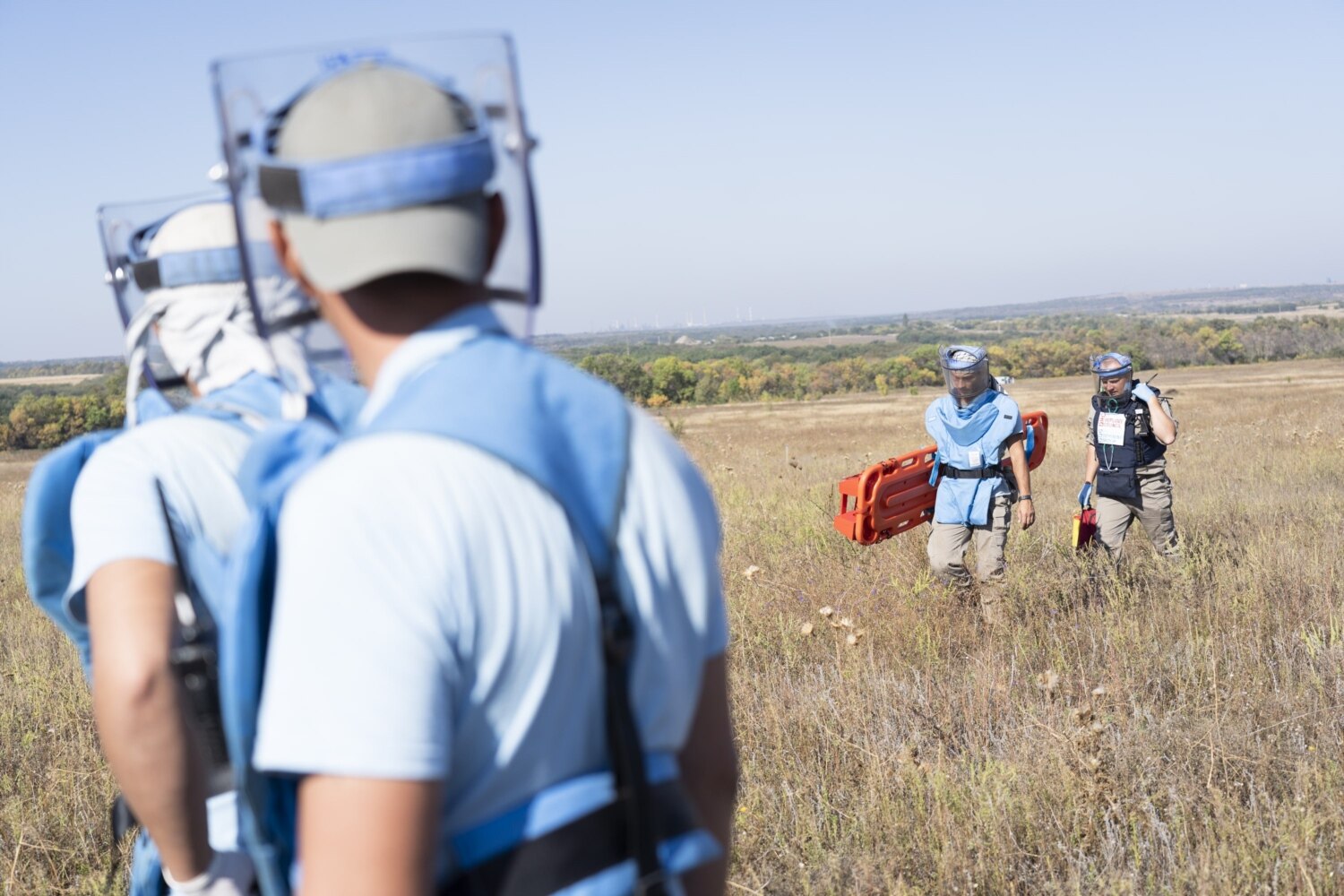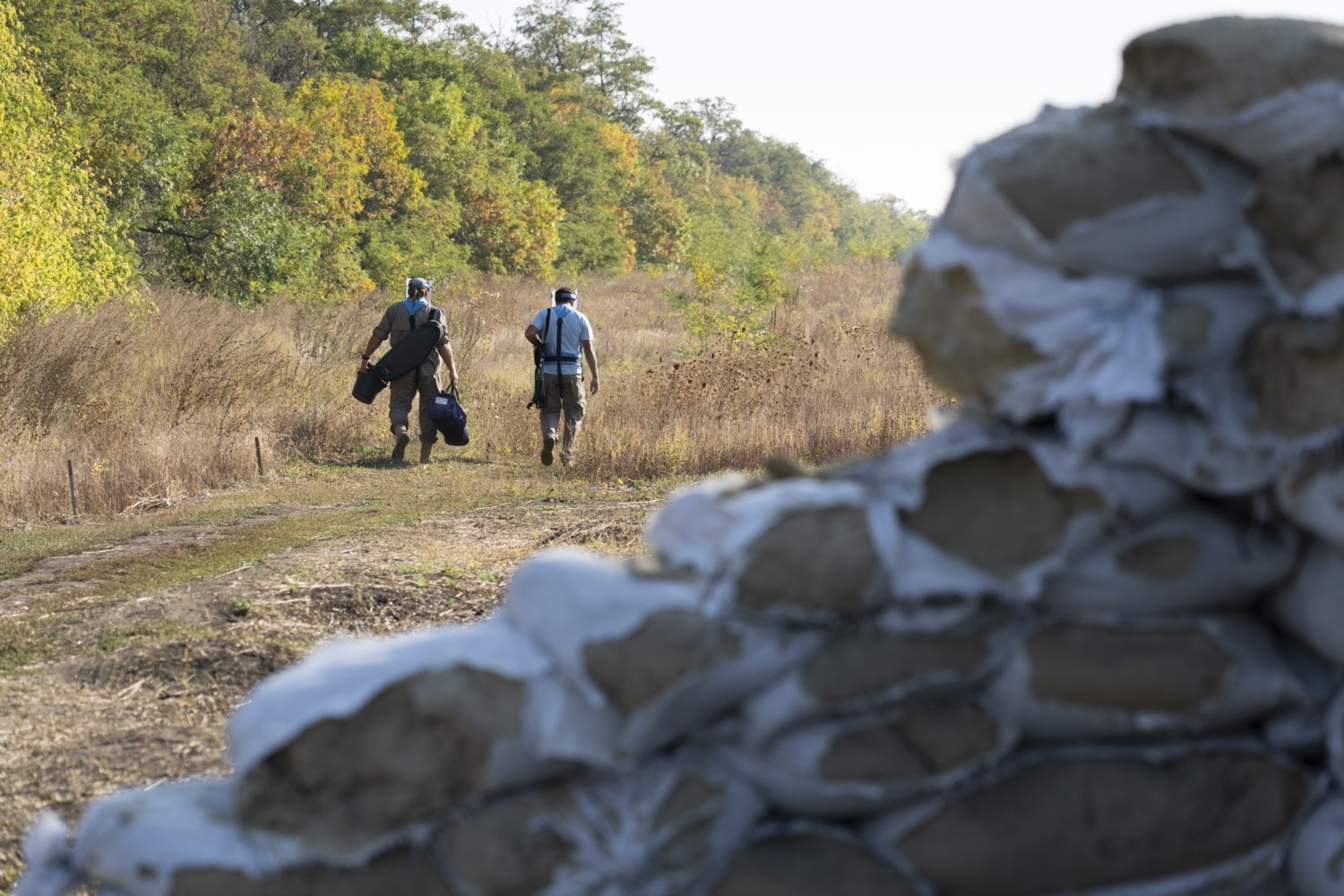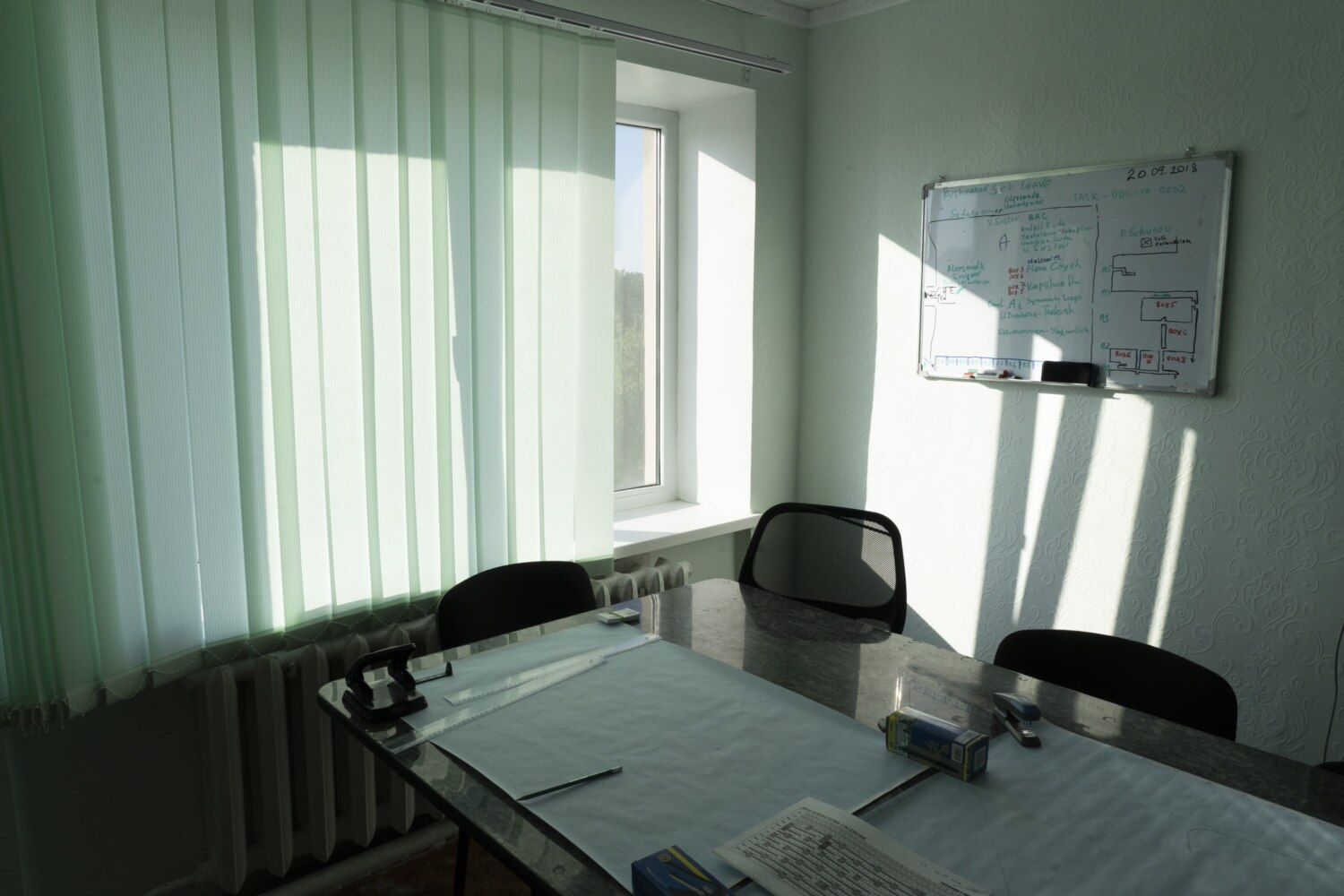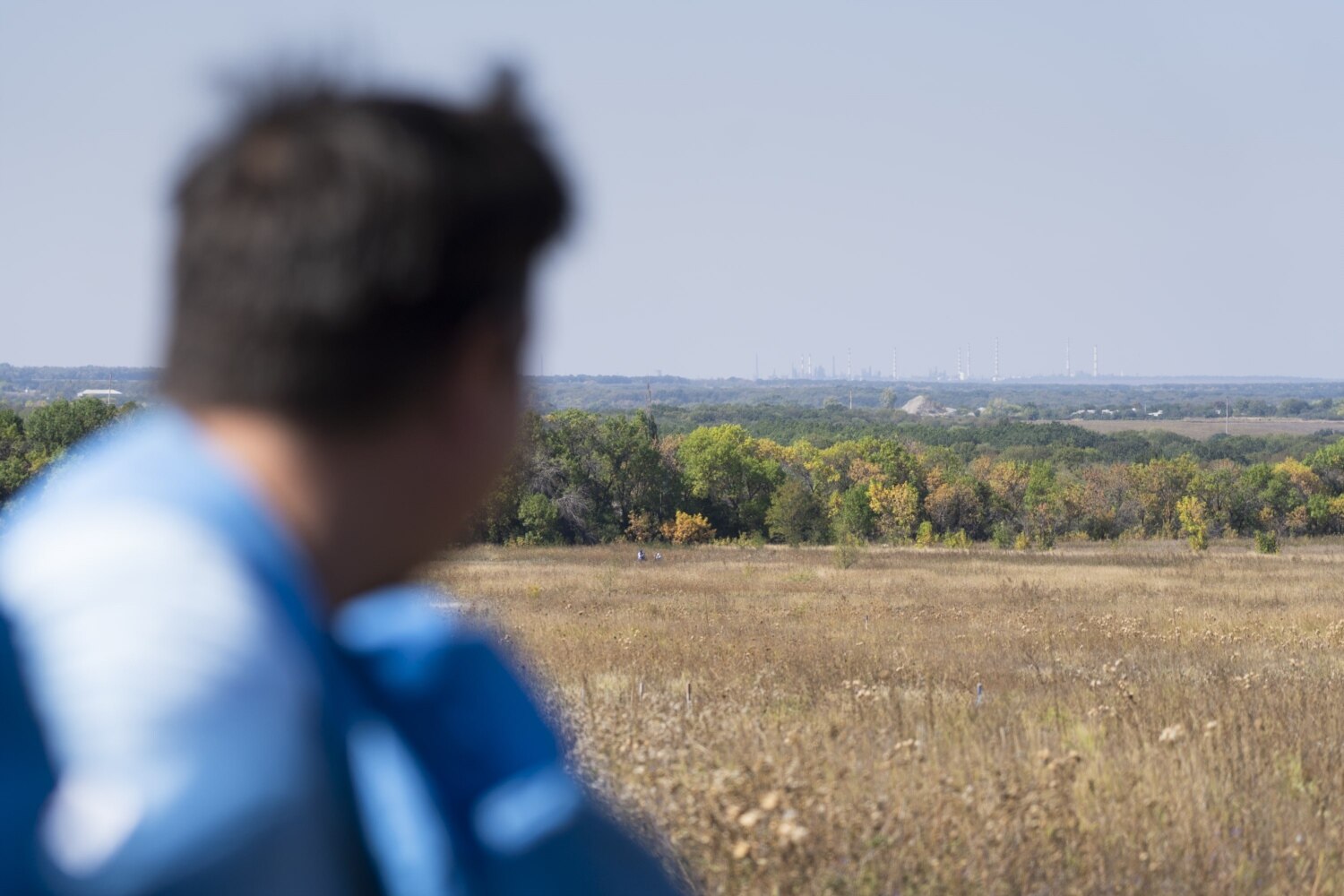“After covering this way 100 meters to one side, we move one rope one meter forward”, section leader Volodymyr Suslov says.
Although the LLD is more efficient, allowing to cover large areas fast, it cannot be used in any place. For example, when the ground is strewn with fragments, the device would keep detecting them without interruption. There could be other circumstances as well.
“A section of the Samara-Lysychansk oil pipeline runs through here. It’s a large-diameter pipe, a lot of metal, and of course, it interferes with detectors. Although it runs about two meters deep, our LLD catches it”, group manager Oleksii Shaidenkov says.
And what about booby traps? In the locations where they are suspected to be, they are manually swept for using a feeler – a cord like this:
People, and often the military, use the term “booby trap” to call explosive devices triggered by a tripwire. A tripwire could be attached to a grenade or an improvised explosive device. Can a sapper accidentally trigger a booby trap? “The feeler is sensitive, and the person feels the resistance of tripwire and stops. After that, it’s up to the section leader or the team leader to decide what to do next, how this booby trap was planted, where the tripwire’s ends are and to what they are attached”, Oleksii Shaidenkov explains.
On the photo, a deminer uses a feeler to sweep the area:
The woman who does it is called Olena Chyzh. She moved from occupied Pervomaisk to Zolote, right next to the separation line. When Olena left the occupied territory, her son was only one month old, and today, he is three and a half years. Before becoming a sapper, Olena worked in the migration service, then went on a maternity leave, and eventually changed profession.
“I wanted to give it a try. I was curious, although in fact, it’s a dangerous and frightful place to be in. I wanted to help, to start clearing it, to “make the ice crack”. This is my land, I grew up here, and almost everything here is native to me. I want my child and other children to walk around here unharmed”, Olena says, when we stand on the cleared part of the field. The DDG base is 28 kilometers away from her home in Zolote; Olena often visits it, but says she wishes for more time to be spent at home, with her child.
After the training, DDG has selected just one more woman besides Olena: Liudmyla Vandiak. Unlike Olena’s, her family lives far away from here – in Yuzhne of the Odesa Oblast. She visits her husband and the three-year-old daughter Valeria on her week off, which the team has after four weeks of work. “She knows that the mom is “away at work”, but doesn’t know yet what exactly her mom does”, Liudmyla laughs.
This woman has also fled occupied Pervomaisk, and like Olena, she found this job after maternity leave. “The training took about a month: we viewed slideshows, studied a lot of theory, were at the desk in the morning; they read us lectures, followed by practical training, and that went on all the way until the evening”, she says.






